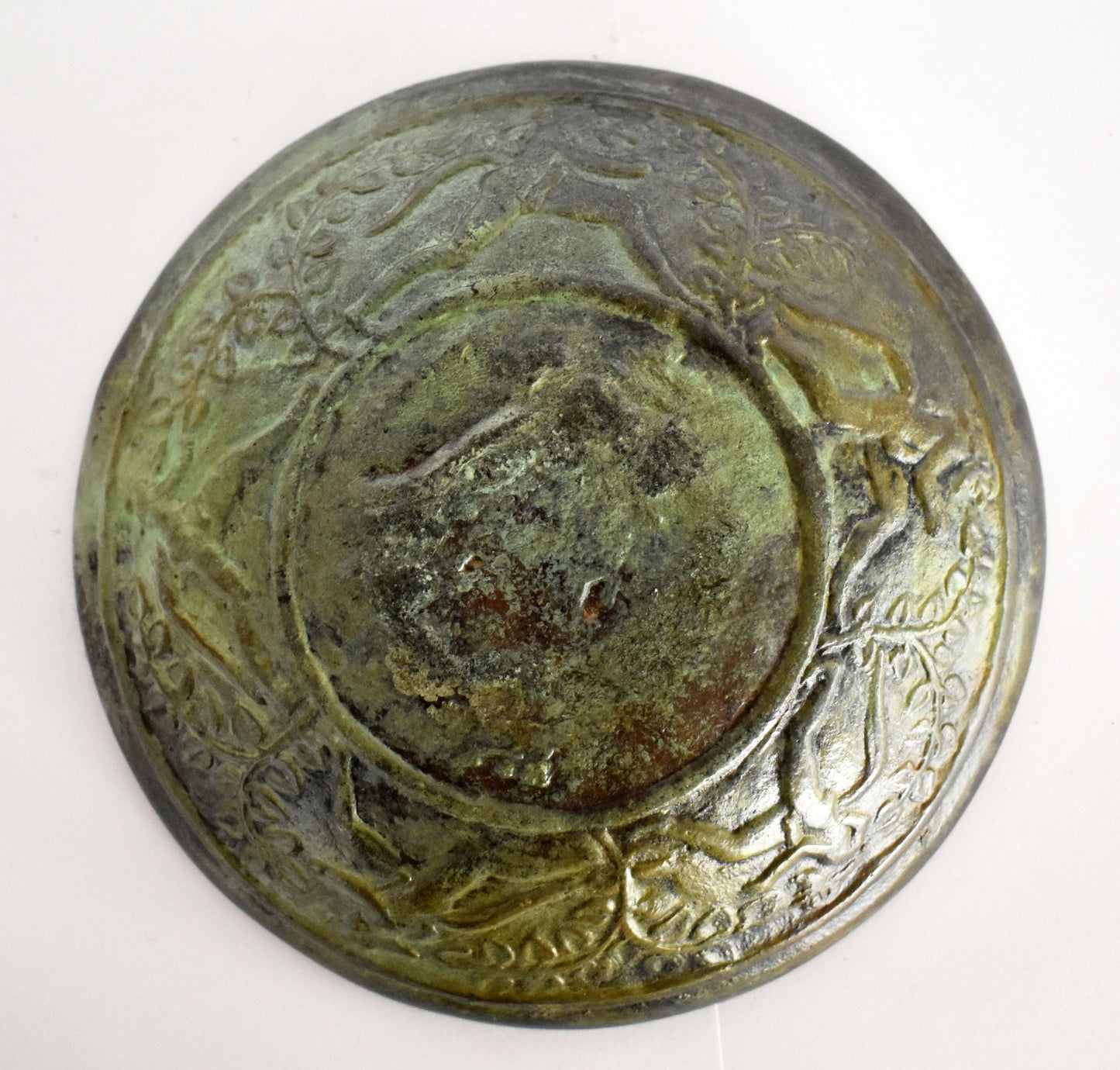Gallery Demeter
Ancient Greek Minoan Plate - Floral Design - Small - Museum Reproduction - pure Bronze item
Ancient Greek Minoan Plate - Floral Design - Small - Museum Reproduction - pure Bronze item
Regular price
€109,90 EUR
Regular price
Sale price
€109,90 EUR
Unit price
per
Tax included.
Shipping calculated at checkout.
Couldn't load pickup availability
Item Specifics
Condition: New, Made in Greece.
Material: Pure Bronze
Height: 3 cm - 1,2 inches
Width: 14 cm - 5,5 inches
Length: 14 cm - 5,5 inches
Weight: 540 g
The Minoan civilization was a Bronze Age Aegean civilization on the island of Crete and other Aegean Islands, whose earliest beginnings were from c. 3500 BC, with the complex urban civilization beginning around 2000 BC, and then declining from c. 1450 BC until it ended around 1100 BC, during the early Greek Dark Ages. It represents the first advanced civilization in Europe, leaving behind a number of massive building complexes, sophisticated art, and writing systems. Its economy benefited from a network of trade around much of the Mediterranean.
The civilization was rediscovered at the beginning of the 20th century through the work of British archaeologist Sir Arthur Evans. The name "Minoan" derives from the mythical King Minos and was coined by Evans, who identified the site at Knossos with the labyrinth and the Minotaur. The Minoan civilization has been described as the earliest of its kind in Europe, and historian Will Durant called the Minoans "the first link in the European chain".
The Minoans built large and elaborate palaces up to four storeys high, featuring elaborate plumbing systems and decorated with frescoes. The largest Minoan palace is that of Knossos, followed by that of Phaistos. The function of the palaces, like most aspects of Minoan governance and religion, remains unclear. The Minoan period saw extensive trade by Crete with Aegean and Mediterranean settlements, particularly those in the Near East. Through traders and artists, Minoans cultural influence reached beyond Crete to the Cyclades, the Old Kingdom of Egypt, copper-bearing Cyprus, Canaan and the Levantine coast and Anatolia. Some of the best Minoan art was preserved in the city of Akrotiri on the island of Santorini; Akrotiri had been effectively destroyed by the Minoan eruption.
The Minoans primarily wrote in the Linear A script and also in Cretan hieroglyphs, encoding a language hypothetically labelled Minoan. The reasons for the slow decline of the Minoan civilization, beginning around 1550 BC, are unclear; theories include Mycenaean invasions from mainland Greece and the major volcanic eruption of Santorini





